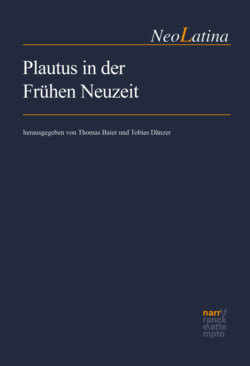Читать книгу Plautus in der Frühen Neuzeit - Группа авторов - Страница 26
6. One Hump or Two?
Оглавление“HassensteinHassenstein, Bohuslaus von’s library” refers to the Lobkowicz Library, a private library still in existence 35 km north of Prague. It was founded by the Bohemian aristocrat and humanist Bohuslaus von HassensteinHassenstein, Bohuslaus von (1461–1510) in Hasištejn castle, near Meißen and Chemnitz, where FabriciusFabricius, Georg lived, and not far from Leipzig. In his time, HassensteinHassenstein, Bohuslaus von amassed a huge library of more than 650 volumes. The library still possesses many of its manuscripts but it does not have one of Plautus, and has not since before 1520.1 According to Kamil Boldan, the Plautus manuscript “must have been taken away in the first years after Bohuslav’s death (1510) because the catalogue of the HassensteinHassenstein, Bohuslaus von library, which dates back to 1520, no longer lists it.”2 As I will explain, FabriciusFabricius, Georg’ 1549 statement affirming its existence in the library must, therefore, be based on out-of-date hearsay and memory, not autopsy, and it arouses the suspicion that FabriciusFabricius, Georg could be referring to the Vetus. I would like to raise that possibility only to dismiss it.
One of HassensteinHassenstein, Bohuslaus von’s close friends was the humanist Johannes Sturnus of Schmalkalden. He is the man FabriciusFabricius, Georg says once “used” (usus est) the manuscript. Sturnus is an obscure figure. He apparently wrote little and even his dates are unknown.3 Originally from Chomutov near the German border in Bohemia, he was a flatterer-turned-friend that hung around HassensteinHassenstein, Bohuslaus von’s library and taught school there; HassensteinHassenstein, Bohuslaus von’s works are filled with scores of affectionate poems to and from him.4 After HassensteinHassenstein, Bohuslaus von died in 1510, Sturnus went to Leipzig. In his biography of EobanusHessus, Eobanus HessusHessus, Eobanus, CamerariusCamerarius d.Ä., Joachim mentions Sturnus respectfully alongside Veit WerlerWerler, Veit.5
Sturnus next taught humaniora in a private school in Annaberg, Germany, near the Czech border. He was an old man by then,6 and between 1532–1535, a teenaged Georg FabriciusFabricius, Georg met him there.7 The two apparently never met again, and when FabriciusFabricius, Georg wrote the preface to a collection of HassensteinHassenstein, Bohuslaus von’s writings many years later, he gives the impression that he traveled rarely, that he had not been especially well-connected to Sturnus, and that he perhaps knew more of HassensteinHassenstein, Bohuslaus von’s Library by reputation than direct experience.8
The simple solution, therefore, is to assume that Sturnus told FabriciusFabricius, Georg about the Plautus manuscript on that occasion in 1532–1535, and hence FabriciusFabricius, Georg’ seemingly authoritative statement to CamerariusCamerarius d.Ä., Joachim in 1549 – 15 years later – about Sturnus having once (olim) used the book, is based on nothing but that memory. In other words, FabriciusFabricius, Georg had not seen the manuscript he was telling Camerarius Camerarius d.Ä., Joachimto go get access to; it had been gone for three decades or more, and he was wrong to assume it was still there.
After HassensteinHassenstein, Bohuslaus von’s death in 1510, many books were loaned or donated and never recovered.9 At the same time, a number of scholars visited to borrow his books; on a visit between 1513–1518, CamerariusCamerarius d.Ä., Joachim received a Greek manuscript as a gift.10 Now, if FabriciusFabricius, Georg’ “old manuscript” (exemplum antiquum) went missing between 1510 and 1520, it raises the obvious suspicion that it could have been the Vetus. Recall the tangled history of that manuscript (ch. 4):
Its first owner was Martin PollichPollich, Martin (1455–1513).
In 1512, PollichPollich, Martin gave it Veit WerlerWerler, Veit.
In 1525, Michael RotingRoting, Michael took and gave it to CamerariusCamerarius d.Ä., Joachim.
Where did PollichPollich, Martin get it? No one knows, but one might easily imagine Sturnus – who seems to have been a bit of a drifter – quietly removing the manuscript as he departed HassensteinHassenstein, Bohuslaus von’s court in 1510 and giving it to him. The timing is perfect, and another point one could make in favor of this hypothesis are the markings in the Vetus.
HassensteinHassenstein, Bohuslaus von did not use marks of provenance, but in his early years he did write some marginal notes in his books. Now, it is also the case that one or more early modern scholars added marks and notes to the Vetus and marks (but few notes) to the Decurtatus. Bandini 2014 attributes all of them in the Decurtatus to CamerariusCamerarius d.Ä., Joachim, but in oral discussion of this paper in 2018, Ulrich Schlegelmilch opined that only the marks in red, and not the others, were from CamerariusCamerarius d.Ä., Joachim’ hand. A lack of competence prevents me from deciding, and still less do I know about the marks and notes in the Vetus. If a skilled palaeographer will compare them to the notes HassensteinHassenstein, Bohuslaus von made in his own manuscripts, then the case could be made that FabriciusFabricius, Georg meant the Vetus, and we now know its origin.
I doubt it, however, and for two reasons. First, CamerariusCamerarius d.Ä., Joachim had had the Vetus since 1525 and had been publishing partial editions based on its variants for years. He said so explicitly in the 1545 edition (note 21 above) and by 1549, it is impossible that FabriciusFabricius, Georg did not know that.
Of course, if FabriciusFabricius, Georg (wrongly) believed Sturnus’ MS was still in HassensteinHassenstein, Bohuslaus von’s Library, then he could never have connected the two. Hence everything hinges on the second point, namely, FabriciusFabricius, Georg calls the manuscript a partial one (aliquot fabularum). That does not suit the Vetus – which is a two-humped camel – but it does describe the Decurtatus, our one-humped camel. It is time to return to it.
